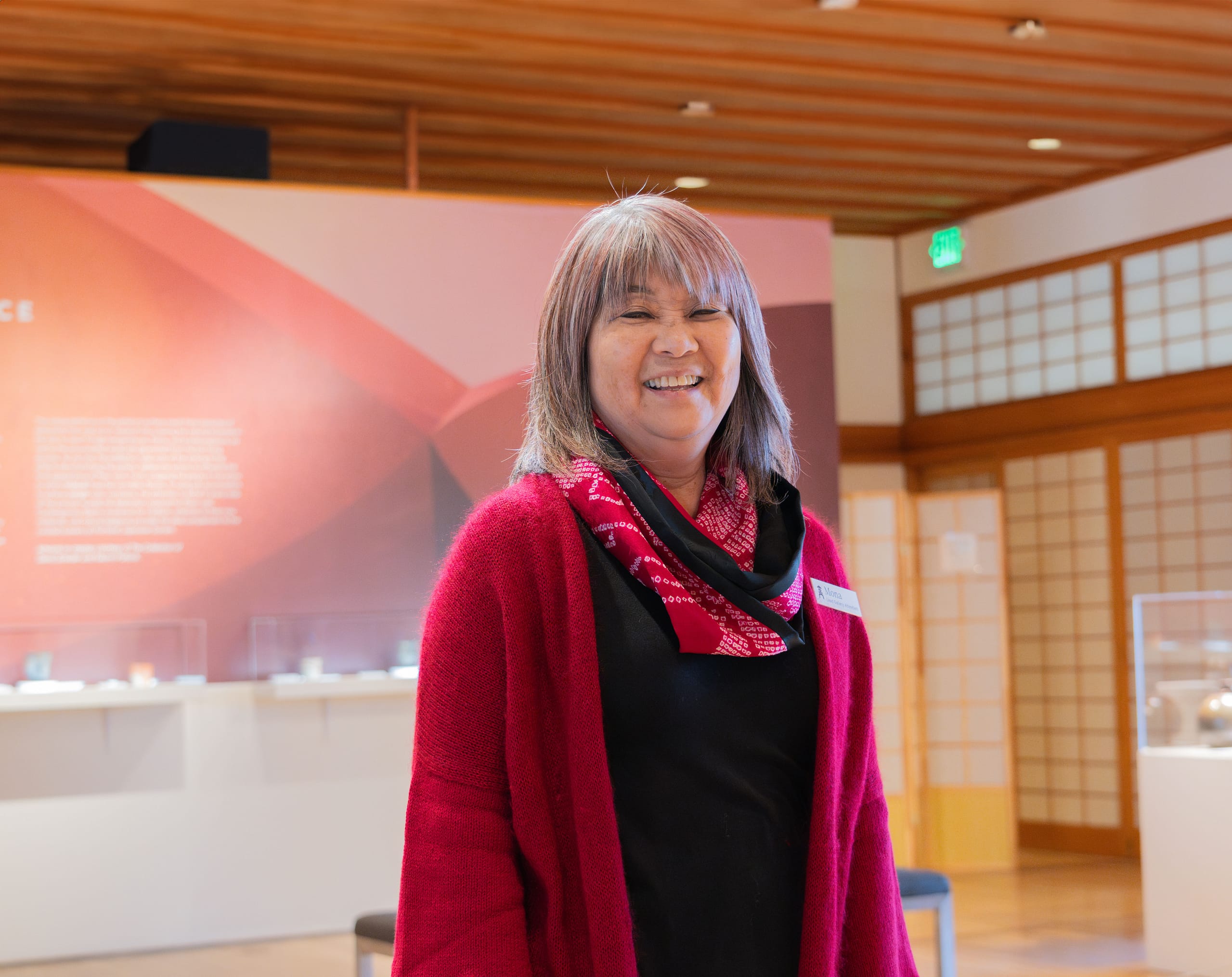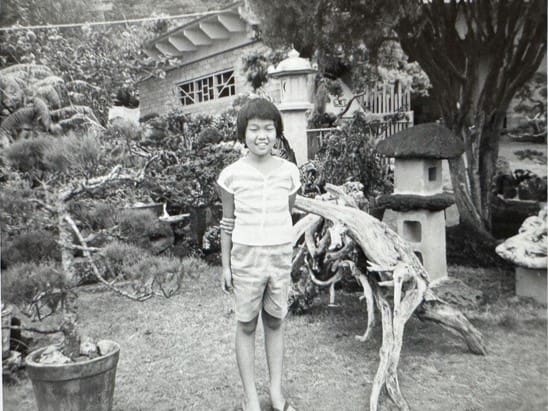
By Will Lerner, Communications Manager for Portland Japanese Garden & Japan Institute
There are many qualities of Portland Japanese Garden that have been extolled over its more than 60 years of existence: its authenticity, its beauty, its virtues as a setting of nature-based self-care, its capacity to foster mutual understanding among peoples. There is perhaps one trait, however, that deserves more attention: the community it provides. Not since World War II has it been more vital to have spaces that provide a sense of belonging. Recent years have introduced several challenges that risk the fraying of the societal fabric, and vitriol that intends to foment fear of the “other” is on the rise. Furthermore, multiple studies demonstrate that social isolation and loneliness are associated with higher mortality. Simply: We need each other.
Portland Japanese Garden, with a mission of Inspiring Harmony & Peace, then, is a lifeline. It tethers us to a common vision of a better tomorrow alongside like-minded individuals. This is perhaps best revealed in the organization’s incredible group of volunteers, a group of more than 180 individuals from a diverse number of backgrounds. Remarkably dedicated, they provide richly detailed tours, guide guests through artwork on display in our exhibitions, and tend to the physical landscape of the Garden itself. They are passionate about their work and have what seems to be an endless reservoir of compassion and kindness and care.
One person who exemplifies these profound qualities is Mona Ozaki. Ozaki, who in addition to working as a Gallery Attendant since 2016 has given time as a Horticulture Support Volunteer since 2010 and has made a lasting and positive impact. After reaching over 2,000 hours of service, she sat down to discuss her time with the Garden.
From Hawai’i to Portland

Ozaki was born and raised in Hawai’i and is Sansei, or a third-generation descendant of Japanese immigrants. She notes her upbringing is different from Japanese Americans who hail from the mainland, due to several considerations beyond geographic distance. For instance, a smaller number of Nikkei (the Japanese diaspora) were incarcerated in Hawai’i during World War II—2,000 innocent people on the islands compared to 120,000 on the continental West Coast. Those of Japanese ancestry in Hawai’i are also not a visible minority as they are in places like Oregon—Asian Americans make up the largest racial demographic in the state, and those who are specifically Japanese in their background exist in numbers only second to those who are white and Filipino. “We didn’t feel like a minority there, per say,” Ozaki notes.
Related: The Experience of Oregon’s Japanese Population Before the Garden
She first arrived in Portland in the mid-80s as an undergrad. After punctuating her life in Portland with returns to Hawai’i, including graduate school, she settled in the Pacific Northwest more permanently by the time the 90s approached. It was during the initial back-and-forth, however, that she first walked the Garden.
“I remember visiting the Garden during my college experience,” Ozaki recalls back to her first time here. “I spent about a half hour in the Strolling Pond Garden, thinking about my grandfather and journaling. I didn’t really connect with the Garden, though, until my son was in a Japanese immersion program. We bought a membership and that’s when I started visiting more regularly.”
After retiring in 2010 from her career as a clinical psychologist, Ozaki began volunteering at the Garden. Instinctually humble, she is trepidatious about counting the number of service hours she has donated. “It’s hard to feel like I help because I get so much back from volunteering here,” she shares. “I get to learn so much. I get to be around such beautiful things—it just feels like being a volunteer around here shouldn’t really qualify as work because you get so much, you learn so much.”
Supporting the Land as it Supports You

The bulk of Ozaki’s time as a volunteer has been in horticulture support, commonly referred to as “hort support” around the Garden. In weather both balmy and foul, these individuals weed, rake, sweep, and clean, providing incredible support to the staff of the Garden Department led by Garden Curator Hugo Torii. Ozaki is among those trusted to help care for the inner section of the Tea Garden, closed to the public to help protect its delicate moss.
“After I retired, I started volunteering as a docent but what really caught my eye was the hort support,” Ozaki recalls. “At first I thought I’d only do that maybe from May to September, but I loved it so much that I just kept doing it. I even made it a condition that if I were to be a Gallery Attendant, I’d still have to be allowed to take time volunteering and doing hort support—I just love it. Horticulture Support Volunteers are salt of the earth—they’re the best people.”
Ozaki recalls a moment from one of Curator Emeritus Sada Uchiyama’s final public events before his retirement at the end of 2023 that she feels encapsulates the work the horticultural support volunteers do.

“He said, ‘I’m a gardener. I know when somebody has swept the moss with too stiff a broom—I can see the marks they left in the moss.’ He went on to share that his favorite place in the garden is wherever he sees that has been well cared for. I thought, ‘Yes! That’s what horticultural support volunteers do!’ Maybe people won’t notice what we did, but they’ll feel it. They’ll feel the care even if they know exactly what we’ve done.”
She also has no shortage of praise for the gardeners. “They’re so respectful of us as volunteers and of each other. They work really well together as a team. They’re clearly dedicated to their craft—they’re approaching it like shokunin [artisans who have achieved a high level of accomplishment and a deep commitment to carry on the legacy of a traditional craft].”
Ozaki’s professional career in psychology saw her often working with children who were in the most dire need of help from someone with her expertise. While the burgeoning field of nature-based solutions for mental health was not something that she personally engaged with before her retirement, she agrees that time spent in places like the Garden has a positive impact. “Talk with anybody who spends much time here and they’ll tell you how they feel its restorative benefits. It’s so beautiful and cared for—you just feel that care. It feels like a sanctuary here, a calming place where you can get away from day-to-day stuff.”
A Community

“I’ve been appreciating just how many of the people I have met here are friendships and contacts that I’ll have for the rest of my life. The people that are here not only love the Garden, but they’re smart. You meet so many fascinating and wonderful people—the Garden winds up attracting them. I’ve been saying you can’t throw a stone here without hitting someone with a PhD.”
Related: Learn more about volunteering at Portland Japanese Garden.
Being in a space that attracts intelligent people is a thrill for Ozaki, who still enjoys learning. “The Garden is a great place to learn about Japanese culture in a very digestible way—I’m third generation, Sansei, so there’s a lot I didn’t know coming in—I’ve gained a lot of knowledge by being here. And it’s not just from other volunteers or staff—my favorite times in the Pavilion Gallery are when a guest will come in and they know more about the art than I do, and I get to learn from them. I love it.”
When asked if she’d encourage others to join her as a volunteer, Ozaki gave an immediate and unsurprising answer: “Absolutely. Absolutely.” She feels that those who will get the most out of volunteering are those who arrive willing to learn.

“There are few things more meaningful to me in my role as Volunteer Programs Manager than to witness when volunteers find and create community with one another through the Garden,” shares Sarah Lynch. “Mona is a great example of that – she is a part of our stalwart Friday hort crew and I so admire the friendships she has built and maintained with her fellow team members over the years. What I admire even more is how she embraces and takes under her wing new volunteers to the crew. It’s very special to see the respect and awe that she immediately inspires in others. They want to work as hard as she does, and they want to learn from her. I know she is a mentor to so many in our volunteer community.”
As you read this, a new day approaches. Whether it is sunny or cast in clouds, Mona Ozaki will get dressed in work clothes and head into the Garden alongside a group of her fellow volunteers, her friends. They will grab brooms, perhaps one of the many she’s donated, and will gently flick away debris from a bed of moss. Ozaki will not let one errant pine needle escape her notice. When their shift is over, Ozaki and company will walk over to a volunteer break room, a cozy space underneath the Membership Center. They’ll talk, confide, share some laughs. The Garden could never claim that by being here Ozaki and her fellow volunteers will never have another worry in their life, but it can promise that by joining this community, they won’t have to face them alone.